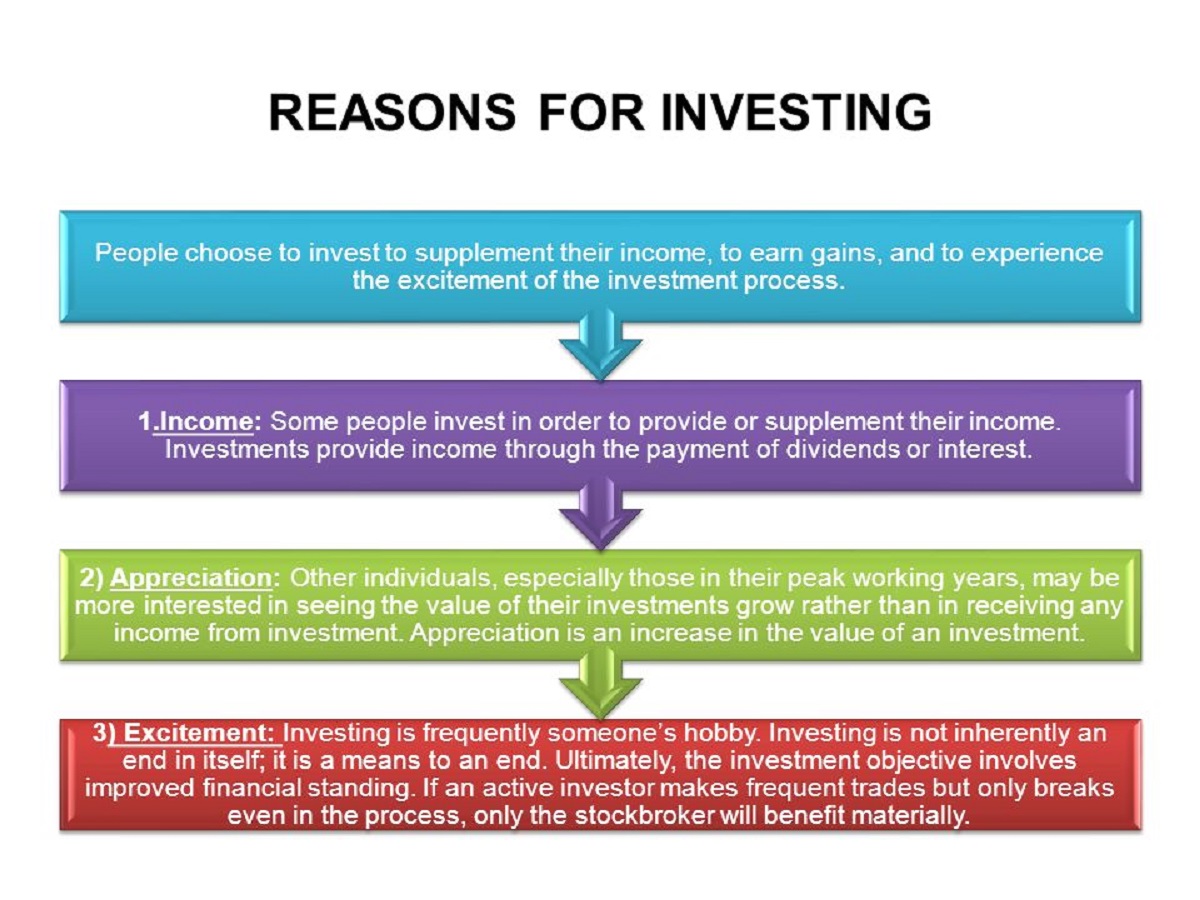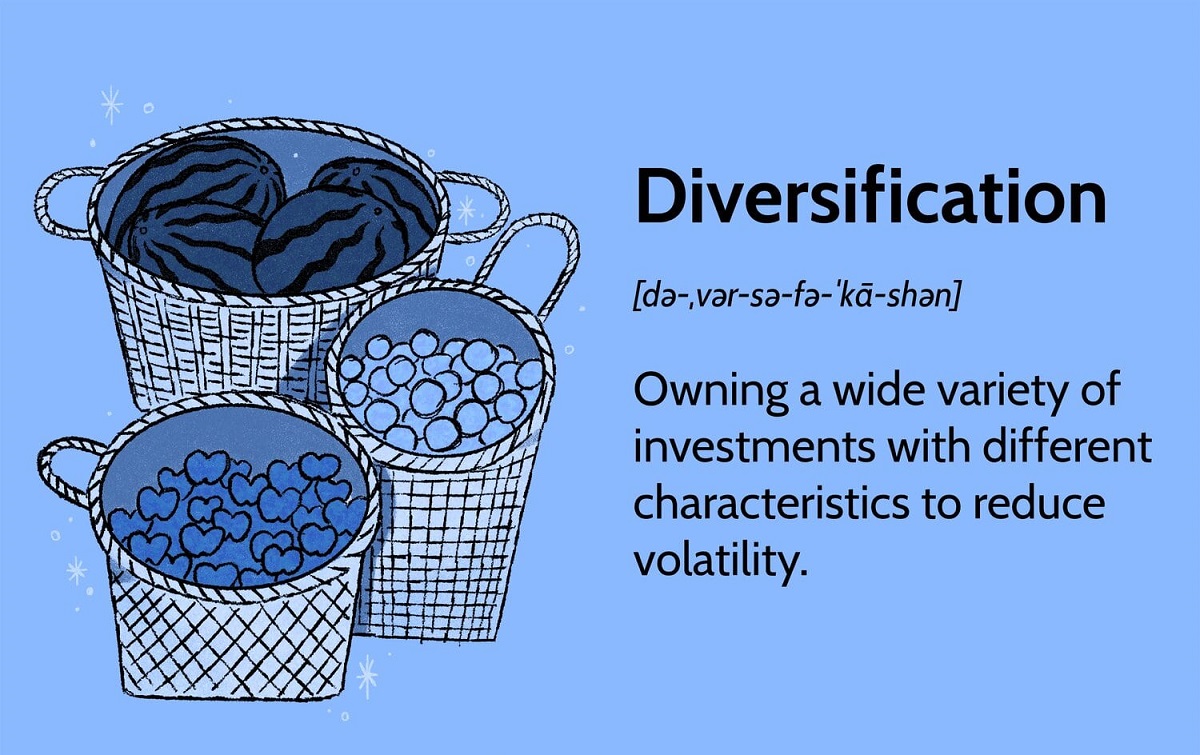Benefits of Investing in Bonds
Investing in bonds can offer numerous advantages for individuals looking to grow their wealth and diversify their investment portfolio. This section will explore some of the key benefits of investing in bonds.
-
Steady Income
Bonds provide investors with a predictable stream of income through regular interest payments. Unlike stocks, which may fluctuate in value, bonds typically offer fixed interest rates, allowing investors to rely on a consistent income source.
-
Diversification
Bonds help to diversify an investment portfolio, reducing risk by spreading investments across different asset classes. This diversification can help to balance the overall portfolio and mitigate the impact of any single investment’s performance.
-
Lower Risk
Compared to stocks, bonds are generally considered a lower-risk investment. This is because bondholders have a higher claim on a company’s assets in the event of bankruptcy. Furthermore, certain types of bonds, such as government bonds, are typically seen as reliable and stable investments.
-
Capital Preservation
Bonds offer the opportunity to preserve capital. While bonds can still be subject to fluctuations in market value, the principal investment amount is generally returned to the bondholder at maturity. This makes bonds an attractive option for those seeking to protect their initial investment.
-
Potential Tax Benefits
Some bonds, such as municipal bonds, offer potential tax advantages. Interest income from these bonds is often exempt from federal and sometimes state taxes, providing investors with an opportunity to reduce their overall tax liability.
-
Accessibility for Individual Investors
Bonds can be purchased in small denominations, making them accessible to individual investors with varying budgets. This allows individuals with limited capital to still participate in the bond market.
-
Favorable Return Potential in Certain Market Conditions
Bonds can offer attractive returns in certain market conditions. For instance, when interest rates are high, newly issued bonds may have higher coupon rates, providing the potential for higher yields.
-
Bond Ladder Strategy
The bond ladder strategy involves investing in a variety of bonds with staggered maturity dates. This strategy helps to balance liquidity, minimize interest rate risk, and potentially provide a reliable income stream from a diversified bond portfolio.
Overall, investing in bonds can offer a range of benefits, including steady income, diversification, lower risk, capital preservation, potential tax advantages, accessibility for individual investors, attractive returns in certain market conditions, and the use of the bond ladder strategy. These advantages make bonds an appealing option for those seeking to enhance their investment portfolio with stability and income generation.
Steady Income
When it comes to investing, one of the key benefits of bonds is the ability to generate a steady income. Unlike stocks, which may experience significant price volatility, bonds offer a predictable stream of income through regular interest payments.
When you invest in a bond, you become a bondholder and essentially lend money to the issuer, whether it’s a government, municipality, or corporation. In return, the issuer agrees to pay you periodic interest payments, typically on a semi-annual basis, until the bond reaches its maturity date.
The amount of income you receive from a bond is determined by its coupon rate, which is expressed as a percentage of the bond’s face value. For example, if you invest in a bond with a face value of $1,000 and a coupon rate of 5%, you would receive $50 in interest payments annually.
One advantage of bonds over other types of investments is the fixed interest rates they offer. While the value of stocks can fluctuate based on market conditions, bonds typically provide a consistent income regardless of market volatility. This provides investors with a stable source of cash flow, which can be particularly appealing for those seeking a regular income stream.
Furthermore, the predictability of bond income can make it easier to plan and budget for future expenses. Whether you are saving for retirement or need to cover living expenses, the steady income from bonds can provide financial security and peace of mind.
It is worth noting that not all bonds guarantee a fixed income. Some bonds, such as floating-rate bonds or inflation-linked bonds, have variable interest payments that adjust based on changes in interest rates or inflation. However, even in these cases, the income potential of bonds remains relatively stable compared to other investment options.
Overall, the steady income provided by bonds makes them an attractive choice for investors looking for reliable cash flow. By investing in bonds, individuals can create a sustainable income stream that can supplement other sources of revenue and help them achieve their financial goals.
Diversification
Diversification is a fundamental principle of investment, and bonds play a crucial role in achieving a well-rounded portfolio. Investing in bonds offers the opportunity to diversify your investment holdings, reducing risk and potentially enhancing overall returns.
When you diversify your portfolio, you spread your investments across different asset classes, such as stocks, bonds, commodities, and real estate. This diversification helps to protect your portfolio from extreme swings in any one sector or investment, as different asset classes tend to perform differently under various market conditions.
Bonds offer a unique advantage in diversification because they have a different risk profile than stocks. While stocks represent ownership in a company and are subject to fluctuations in market value, bonds represent a debt obligation and provide a fixed income stream. This means that when stocks are experiencing volatility, bonds often provide stability and act as a buffer against potential losses.
By including bonds in your investment portfolio, you can potentially reduce the overall risk exposure. If stocks are performing poorly, the income from bonds can help offset losses and stabilize your portfolio. On the other hand, if stocks are performing well, the income from bonds can provide a consistent income stream while you benefit from the growth of stocks.
Furthermore, different types of bonds offer unique risk and return characteristics, allowing for further diversification within the bond asset class itself. For example, you can invest in government bonds, corporate bonds, municipal bonds, or even international bonds. Each of these bond types has different risk profiles, interest rates, and credit ratings, which can help spread your risk across various issuers and sectors.
Overall, diversification is a key strategy for managing risk and achieving long-term investment success. By including bonds in your investment portfolio, you can diversify across different asset classes, providing greater stability and potentially enhancing your overall investment returns.
Lower Risk
When it comes to investing, one of the primary considerations for many individuals is the level of risk involved. Bonds are generally considered to be a lower-risk investment compared to other asset classes, such as stocks.
One of the reasons why bonds are considered lower risk is because they represent a form of debt. When you invest in a bond, you are essentially lending money to the bond issuer, whether it’s a government, municipality, or corporation. In return, the issuer promises to repay the principal amount at maturity and make regular interest payments.
Unlike stocks, where investors are subject to the ups and downs of the stock market, bondholders have a higher claim on the issuer’s assets in the event of bankruptcy. This means that if the issuer defaults on its payment obligations, bondholders have a greater chance of recovering their investment compared to stockholders.
Furthermore, certain types of bonds, such as government bonds, are typically seen as more secure and less likely to default. This is because governments have the ability to raise funds through taxation and have a larger pool of resources to draw upon.
In addition to lower default risk, bonds also offer the benefit of fixed interest rates. When you invest in a bond, you know exactly how much interest you will receive throughout the bond’s term. This predictability allows you to assess the risk and potential return of the investment more accurately.
However, it is important to note that while bonds are generally lower risk, they still carry some level of risk. Factors such as changes in interest rates, inflation, and credit quality can impact the value and performance of bonds. It’s essential to research and consider these factors before investing in any bond.
Overall, the lower risk associated with bonds makes them an attractive option for investors who prioritize capital preservation and are more risk-averse. By including bonds in your investment portfolio, you can help mitigate the overall risk exposure and achieve a more balanced and stable investment strategy.
Capital Preservation
Investing in bonds offers the opportunity for capital preservation. While all investments come with some level of risk, bonds are generally considered safer than other asset classes when it comes to preserving your initial investment.
When you invest in a bond, you are essentially lending money to the bond issuer. In return, the issuer promises to repay the principal amount in full at maturity. This contractual obligation provides a level of assurance that you will receive your initial investment back.
Unlike stocks, which can be subject to significant price fluctuations, the value of bonds is influenced primarily by changes in interest rates and the creditworthiness of the issuer. This means that even if the market value of a bond fluctuates, the bondholder is still entitled to receive the full principal amount at maturity.
This focus on preserving your capital is particularly important for individuals with a lower risk tolerance or those who have specific financial goals that depend on maintaining their initial investment. Whether you are saving for a future expense or seeking to protect your retirement funds, bonds can play a key role in safeguarding your capital.
In addition to the return of the principal amount at maturity, bonds also provide a steady income stream through regular interest payments. This income can further support capital preservation by providing a reliable cash flow that can be reinvested or used to cover living expenses.
It is important to note that while bonds generally have a lower risk of capital loss compared to stocks, there is still some risk involved. Factors such as changes in interest rates, creditworthiness of the issuer, and macroeconomic conditions can impact the value and performance of bonds.
Overall, bonds offer investors the opportunity to preserve their capital while generating income. By including bonds in your investment portfolio, you can focus on protecting your initial investment while potentially achieving a steady stream of income over time.
Potential Tax Benefits
Investing in bonds can offer potential tax benefits, making them an appealing option for individuals looking to minimize their overall tax liability. Certain types of bonds, such as municipal bonds, offer specific tax advantages that can help investors keep more of their investment returns.
Municipal bonds, also known as “munis,” are issued by state and local governments to fund public projects. One of the primary benefits of investing in municipal bonds is that the interest income is often exempt from federal income tax. In some cases, the interest may also be exempt from state income tax, particularly when you invest in bonds issued by your own state.
This tax advantage can be particularly valuable for individuals in higher income tax brackets. By investing in municipal bonds, you can potentially reduce your taxable income and keep more of your investment returns. This can be especially significant over time, as the tax savings can compound and contribute to greater overall wealth accumulation.
In addition to the tax benefits of municipal bonds, certain types of bonds issued for specific purposes may also offer tax advantages. For example, bonds issued to fund renewable energy projects or affordable housing initiatives may be eligible for federal tax credits, providing additional incentives for investors.
It’s important to note that not all bonds offer tax advantages. Corporate bonds, for instance, do not have tax-exempt status. The tax treatment of bond income also varies depending on the investor’s individual tax situation and the specific tax laws in their country or state.
While the potential tax benefits of investing in bonds can be advantageous, it’s essential to consult with a qualified tax professional to understand the specific tax implications for your investment strategy. They can help you assess the potential tax advantages of different types of bonds and determine the best approach to optimize your tax position.
Overall, the potential tax benefits of investing in bonds, particularly municipal bonds, can make them an attractive option for individuals looking to minimize their tax liability. By taking advantage of these tax benefits, investors can potentially enhance their overall investment returns and achieve greater tax efficiency in their investment portfolio.
Accessibility for Individual Investors
One of the key advantages of investing in bonds is the accessibility they offer to individual investors. Unlike certain investment options that may require significant capital or complex investment strategies, bonds can be easily accessible to individuals with varying budgets and investment goals.
Bonds can be purchased in small denominations, allowing individual investors to start with a relatively low initial investment. This accessibility makes it easier for individuals with limited capital to participate in the bond market and potentially benefit from the advantages that bonds offer.
Furthermore, bonds are traded on various platforms, including online brokerage accounts, making them more accessible than ever before. This facilitates easy buying and selling of bonds, providing individuals with the flexibility to build and manage their bond portfolio according to their investment objectives.
Additionally, bond issuers often provide clear information about their offerings, making it easier for individual investors to conduct thorough research and make informed investment decisions. This transparency helps individual investors understand the terms of the bond, such as the interest rate, maturity date, and credit rating of the issuer.
Moreover, individuals can access a wide range of bonds to suit their investment preferences. Whether it’s government bonds, corporate bonds, municipal bonds, or international bonds, there are options available to cater to different risk appetites and investment objectives.
This accessibility allows individual investors to diversify their portfolios and reduce risk by allocating funds to bonds alongside other investment assets. By including bonds in their investment strategy, individuals can enhance their overall portfolio performance and potentially achieve a more balanced risk-return profile.
It is worth noting that while bonds are accessible to individual investors, it is still important to thoroughly assess the risks and conduct due diligence before investing. Understanding the terms and conditions of the bond, assessing the creditworthiness of the issuer, and considering market conditions are crucial aspects of successful bond investing.
Overall, the accessibility of bonds for individual investors makes them a viable option for those looking to build a diversified investment portfolio. With relatively low entry points and ease of access, bonds allow individuals to participate in the bond market and potentially benefit from the advantages they offer.
Favorable Return Potential in Certain Market Conditions
Bonds can offer attractive returns, particularly in certain market conditions. When interest rates are high, newly issued bonds may have higher coupon rates, providing the potential for higher yields for bondholders.
As interest rates increase, the fixed interest rates on existing bonds may become less attractive compared to newly issued bonds with higher rates. This can create an opportunity for bond investors to sell their existing bonds at a premium and reinvest in bonds with higher coupon rates, potentially earning a higher return.
Furthermore, when bond prices are inversely related to interest rates, there may be favorable return potential during times of falling interest rates. As interest rates decrease, the market value of existing bonds typically rises. This can lead to capital appreciation for bondholders who choose to sell their bonds before maturity.
Additionally, certain types of bonds, such as high-yield or corporate bonds, may offer higher returns compared to more conservative bond investments. These bonds often come with a higher level of risk, as they are issued by companies with lower credit ratings. Nevertheless, for investors comfortable with the associated risks, these bonds can provide the potential for increased returns.
It’s important to note that while bonds can offer favorable return potential, there are various factors that can affect returns and should be carefully considered. These include macroeconomic conditions, changes in interest rates, credit risk, and the specific terms and conditions of each bond. Investors need to assess these factors and conduct thorough research to make informed investment decisions.
Overall, bonds can provide attractive return potential in certain market conditions. Whether it’s taking advantage of higher coupon rates during rising interest rate environments or capitalizing on the inverse relationship between bond prices and interest rates, investors can potentially benefit from the return opportunities that bonds offer.
Bond Ladder Strategy
The bond ladder strategy is a popular approach used by investors to manage risk and preserve capital while generating a steady income stream. This strategy involves investing in a series of bonds with staggered maturity dates, creating a “ladder” of bonds with different terms.
By implementing a bond ladder, investors can balance the objectives of liquidity, income, and potentially favorable interest rates. Here’s how it works:
1. Diversification and Risk Management: With a bond ladder, an investor spreads their investment across multiple bonds with varying maturities. This diversification helps to reduce the risk associated with putting all funds into a single bond or a narrow range of maturity dates. If interest rates rise or fall, the impact on the portfolio is mitigated because each bond is maturing at a different date.
2. Liquidity: Having a bond ladder ensures that a certain portion of the portfolio is maturing each year. This provides the investor with regular cash flow and the flexibility to access their capital if needed. Rather than investing everything in long-term bonds, which may have limited liquidity, the bond ladder strategy provides ongoing capital availability.
3. Income Generation: The bond ladder strategy aims to provide a steady income stream. As each bond in the ladder matures, the investor can reinvest the principal into new bonds with longer maturities. This allows for the potential to benefit from potentially higher interest rates over time. The consistent stream of income helps to meet ongoing financial needs.
4. Interest Rate Management: With a bond ladder, an investor can take advantage of interest rate fluctuations. If interest rates rise, the investor can reinvest the maturing bonds at higher rates. Conversely, if interest rates fall, the investor still has bonds with higher interest rates that continue to generate income. This flexibility enables the investor to adapt to changing interest rate environments.
5. Ongoing Portfolio Management: Maintaining a bond ladder requires periodic monitoring and rebalancing. As bonds mature, the investor must reinvest the principal into new bonds to keep the ladder intact. This process allows for ongoing evaluation of investment options, ensuring that the portfolio aligns with the investor’s changing goals and risk tolerance.
It’s important to note that the bond ladder strategy requires careful planning and consideration of factors such as bond selection, maturity dates, and interest rate expectations. Additionally, investors should be aware of the potential impact of inflation on the purchasing power of the income generated by the bond ladder.
Overall, the bond ladder strategy offers an organized and disciplined approach to bond investing. By creating a diversified and staggered portfolio of bonds, investors can manage risk, preserve capital, generate income, and potentially benefit from favorable interest rate movements.
Conclusion
Bonds offer a range of benefits for investors looking to enhance their investment portfolios. From providing a steady income stream to offering diversification and lower risk, bonds can play a crucial role in achieving financial goals.
The steady income generated by bonds can be particularly appealing to investors seeking a reliable cash flow. With fixed interest payments, bonds provide stability and predictability, making them an attractive option for those looking to supplement their income or plan for future expenses.
Diversification is another significant advantage of investing in bonds. By spreading investments across different asset classes, investors can potentially mitigate risk and balance their overall portfolio. Bonds, with their lower volatility compared to stocks, can act as a stabilizing force during market downturns.
Bonds are generally considered lower risk compared to other asset classes. With the higher claim on issuer assets in the event of bankruptcy, bondholders have a better chance of recouping their investment. This focus on capital preservation makes bonds appealing for those looking to protect their initial investment.
Furthermore, certain types of bonds offer potential tax benefits. Municipal bonds, in particular, can provide tax advantages, such as exemption from federal and sometimes state income tax. This can help investors minimize their tax liability and optimize their overall returns.
Bonds also offer accessibility to individual investors, as they can be purchased in small denominations. This allows investors with varying budgets to participate in the bond market and benefit from the advantages that bonds provide.
Additionally, bonds can offer favorable return potential in certain market conditions. Whether it’s through higher coupon rates during rising interest rate periods or capital appreciation during falling interest rate environments, bonds present opportunities for investors to achieve attractive returns.
The bond ladder strategy provides a systematic approach to bond investing, enabling investors to manage risk, generate income, and preserve capital. By diversifying maturity dates and regularly reinvesting, investors can adapt to changing market conditions and potentially benefit from favorable interest rate movements.
In conclusion, bonds offer a wide range of benefits, including steady income, diversification, lower risk, capital preservation, potential tax advantages, accessibility for individual investors, favorable return potential in certain market conditions, and the option to implement the bond ladder strategy. By incorporating bonds into an investment portfolio, individuals can enhance their financial position, achieve stability, and work towards their long-term financial goals.

























